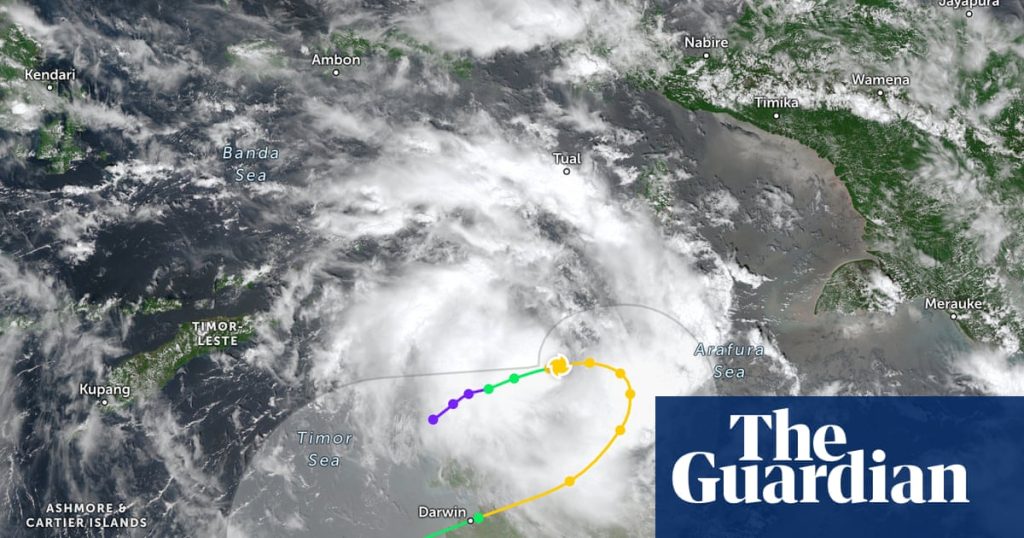If tropical cyclone Fina crosses the Northern Territory coast on Friday, it could equal the earliest cyclone to make landfall in Australia.
Fina, a category one cyclone about 370km north-east of Darwin, was moving east and expected to intensify to category two before turning south on Thursday.
The latest Bureau of Meteorology update (issued at 10.30am local time on Wednesday) anticipated the cyclone would reach the NT coast for “potential impact” on Friday or Saturday.
Sign up to get climate and environment editor Adam Morton’s Clear Air column as a free newsletter
The senior meteorologist Jonathan How said the earliest cyclone to make landfall in Australia was Ines, which crossed the Kimberley on 21 November 1973. The earliest to cross the NT coast was Alessia on 27 November 2013.
“Based on Fina’s track map it could also cross the coast on the 21st, 22nd November, so that could equal the record for earliest landfall,” he said, and would be the earliest for the NT.
Even though Australia’s official cyclone season began on 1 November, he said, the first to cross land was usually mid to late December, on average.
The bureau’s latest track map indicated Darwin could be affected.
The most recent significant cyclone to impact Darwin was Marcus in 2018, which made landfall as a category two system with wind gusts of 130km/h, bringing trees down and causing power outages.
Prof Steve Turton, an adjunct professor at Central Queensland University, said climate change was intensifying tropical cyclones around the world.
Sign up to Clear Air Australia
Adam Morton brings you incisive analysis about the politics and impact of the climate crisis
Privacy Notice: Newsletters may contain information about charities, online ads, and content funded by outside parties. If you do not have an account, we will create a guest account for you on theguardian.com to send you this newsletter. You can complete full registration at any time. For more information about how we use your data see our Privacy Policy. We use Google reCaptcha to protect our website and the Google Privacy Policy and Terms of Service apply.
after newsletter promotion
Fewer tropical cyclones were anticipated with a warming climate, but they would be more severe – with a higher proportion of category four and five cyclones – according to the national climate risk assessment.
“We do know that with climate change that we’re expecting the intensity of these storms to increase. We’re expecting them to intensify more rapidly. We’re already seeing those patterns,” Turton said.
Sea surface temperatures in the Timor Sea were above average for this time of year, he said, and well above the 26.5C threshold needed for cyclones to form.
Fina was small in size, he said. “Because it’s small, it’s likely to spin up quicker. But it can also weaken quicker because of inertia. So these small cyclones can sometimes catch you unawares and suddenly they intensify very rapidly.”

